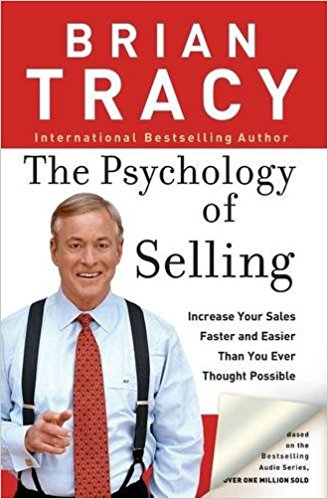The Psychology of Selling Summary

3 min read ⌚
 Increase Your Sales Faster and Easier Than You Ever Thought Possible
Increase Your Sales Faster and Easier Than You Ever Thought Possible
“The Psychology of Selling” is a guide, written to help beginners in sales to improve their communication and sales-skills for the purpose of influencing the potential customers.
About Brian Tracy
 Brian Tracy is a sales expert, a motivational speaker and the author of several books such as Eat That Frog, Be a Sales Superstar, Goals!, No Excuses!, Change Your Thinking Change Your Life, etc.
Brian Tracy is a sales expert, a motivational speaker and the author of several books such as Eat That Frog, Be a Sales Superstar, Goals!, No Excuses!, Change Your Thinking Change Your Life, etc.
“The Psychology of Selling Summary”
Salespeople know better than anyone that selling can become frustrating at times. Unfortunately, it’s one of the key elements in making profits and an unavoidable activity. The sales process tests your mind-capacities and broadness to accept rejection, without destroying your self-esteem.
Sales experts such as Brian Tracy advise that you should rise above the circumstances by utilizing several methods and techniques backed by psychology and personal experience.
The image you have for yourself affects the selling processes; the mindset can either boost or reduce the sales performance.
-
- In sales, the Pareto 80/20 rule indicates that 80% of the money derives from 20% of the customers. In other words, “the top 20% of salespeople are making 80% of the gross-profits.”
-
- Don’t hesitate and join the 20% just by implementing some modifications to enhance your performance.
-
- Logically, higher self-confidence is critical for making a difference.
- People often are not sure of their needs and make purchases based on emotions and feelings.
Just a small change can lead to mind-blowing results, regarding sales. Generating revenues depends not only on the actual performance but also on other external factors that you must take into account. Don’t worry; Brian has excellent news for you – the trick to becoming a great salesman is to grasp several sales-rules that are easy to follow:
-
- Identifying the needs, wants, and demands of the target audience.
-
- Elicit requirements by defining a set of questions.
-
- Learn how to make a good first impression.
-
- Responding passionately and distinguish facts from opinion.
-
- Using a wide range of methods for closing a sale and building long-term collaboration.
- Try to get more referrals that will ultimately boost the sales.
What is keeping you in the dark when you are about to close a deal? There are two main mental issues: “fear of failure” and “fear of rejection.” Think of it this way, if you are afraid to fall off a bike, you’ll never learn how to ride it.
Rejection is an integral part of sales, in truth, it’s even unavoidable. The best way to deal with insecurity is to really go for it, enhance your self-esteem and don’t take anything too personally. At first, you may be a little scared, but ultimately, once you understand the core of selling; everything will seem so natural.
Key Lessons from “The Psychology of Selling”
1. The power of setting long and short-term objectives
2. The perfect dress-code
3. Test the prospects
The power of setting long and short-term objectives
How many times did you hear that without goals, we would be lost? In general, people don’t have interest in establishing monthly, weekly, daily reports about their progress.
Visualize, create a mental picture and underline the activities that are crucial for reaching those objectives.
The perfect dress-code
You think that customers are reasonable and their only concern is the product? – No, they are looking at everything, the seller, the company, the processes, the way you treat your employees and so forth.
They pay exclusive attention to the seller; make sure you blow their minds with fashionable clothing and caring attitude.
Test the prospects
Once you suck the customers in, give them a small portion of the actual product to see whether they will bite.
When you find the hot-spot, you can then enforce a full-scale presentation in hopes of getting them eager about your goods.
Like this summary? We’d Like to invite you to download our free 12 min app, for more amazing summaries and audiobooks.
“The Psychology of Selling” Quotes
Once you have programmed a goal into your subconscious mind, it takes on a power of its own. Share on X Fear and self-doubt have always been the greatest enemies of human potential. Share on X Rejection has nothing to do with you. Instead, it is like the rain or the sunshine. It just happens from day to day. Share on X The prospect does not care what your product is. He only cares about what your product or service will do for him. Share on X If you do what other successful people do, you will eventually get the same results that they do. Share on X







